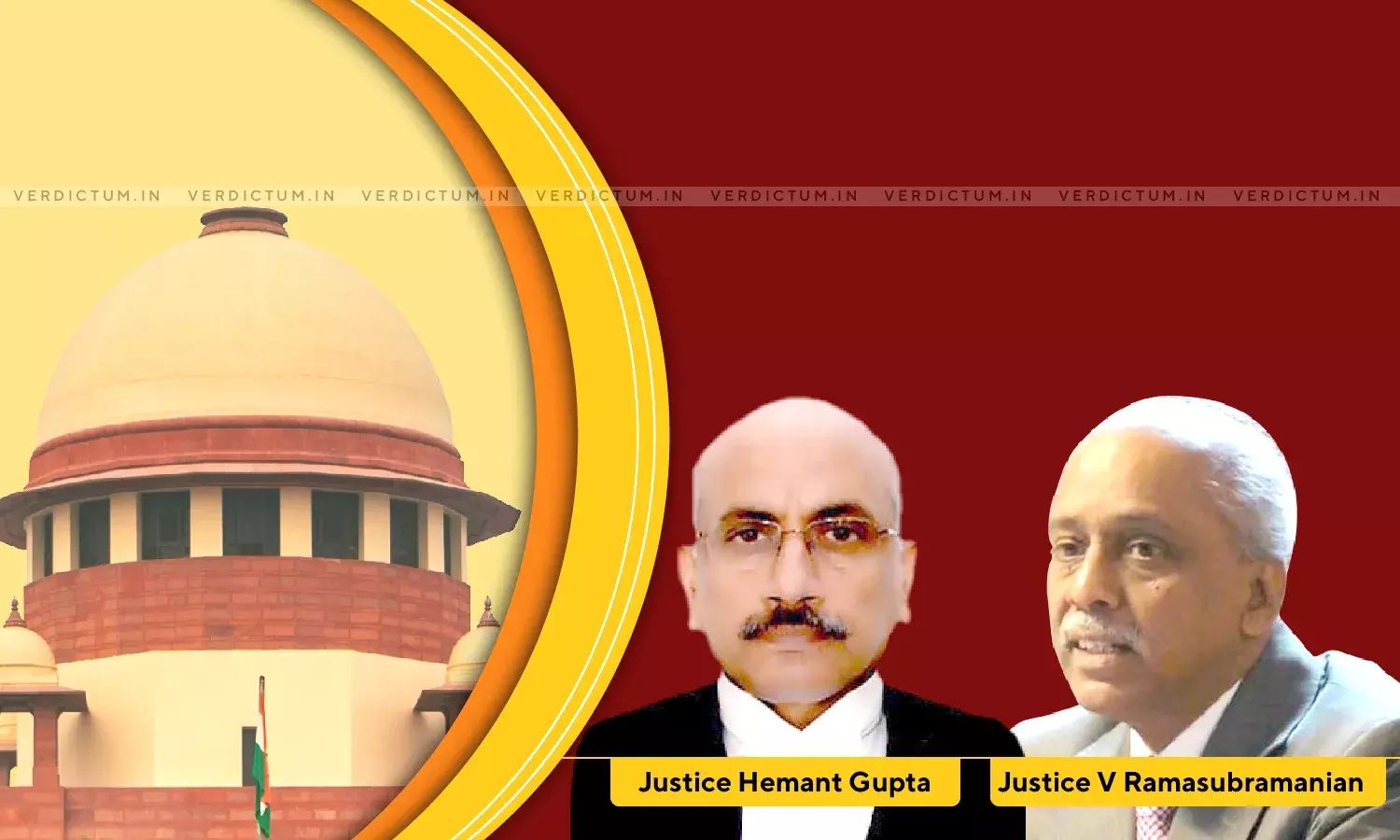Allocation Of Cadre Not A Matter Of Right; IAS Candidates Have No Right To Be Allocated To A Cadre Of Their Choice Or Home State – Supreme Court

A two-judge Bench of Justice Hemant Gupta and Justice V. Ramasubramanian has held that selected IAS officers have no right to be allocated to a cadre of their choice or to their home state.
The Supreme Court also observed that the state had no discretion in the allocation of cadre at its whims and fancies.
Appeals were preferred against the judgment of Kerala High Court which had directed the Appellant, Union of India, to allocate the Respondent to the Kerala cadre of the All-India Service.
In this case, the Respondent had sought appointment to the All-India Services pursuant to Civil Services Examinations, 2006. She was successful and found her name in the list of candidates selected by UPSC. She belonged to a Muslim community and also to Other Backward Classes (OBC). However, she did not claim the benefit of reservation. The Appellant was allotted Himachal Pradesh Cadre after the Union received the assent of the Himachal Pradesh Government.
This was followed by filing an Original Application under Section 19 of the Administrative Tribunals Act, 1985 before the Ernakulam Bench of the Central Administrative Tribunal. The Tribunal directed the Union to allocate and accommodate the Respondent against the outsider OBC vacancy in the Maharashtra cadre by virtue of her merit over the candidate identified and allotted the Maharashtra cadre.
Aggrieved by the order of the CAT, both the parties filed an appeal before the High Court, which directed the Appellant to allocate Kerala cadre to the Respondent.
The two issues which were dealt with by the Court were – i) whether consultation in respect of allocation of cadre is required to be done with the State from which the candidate belongs or with the State to which the candidate is being allocated; ii) whether the Respondent was entitled to choose the cadre of her choice.
Concerning the first issue, the Court rejected the contention of the Respondent that there was no consultation with the State of Kerala while allocating the cadre to her. The Court observed, "The applicant was allocated to the State of Himachal Pradesh and there was a consent duly given by the State of Himachal Pradesh for her allocation to that State. In fact, no consultation was required to be carried out in respect of the applicant with Kerala State. Therefore, the mandate of Rule 5(1) of the Cadre Rules is satisfied when the consultation was made with the State to which allocation was made".
The Court further opined that since the Respondent did not avail any benefits or relaxations accorded to the OBC category of candidates, she was treated as a general category candidate and in such a case there was no need for consultation with the State of Kerala.
The Bench observed, "The applicant was not even eligible to be considered for allocation to the said State in terms of the allocation order. The reasoning given by the High Court that there was cadre deficiency, therefore, the applicant was entitled to be allocated is strange and bereft of any merit."
Citing the precedent Union of India and Ors. v. Rajiv Yadav, IAS and Ors., the Court held, "the allocation of cadre is not a matter of right. It was held that a selected candidate has a right to be considered for appointment to the IAS but he has no such right to be allocated to a cadre of his choice or to his home state."
"The procedure for allocation of cadre is a mechanical process and admits no exception except in terms of Rule 7(4) which is to be read as proviso to Rule 7(3)," the Court further asserted.
The Court held that the Tribunal or the High Court should have refrained from interfering with the allocation of cadre on the argument of an alleged violation of the allocation circular.
The Court further observed that the Original Application filed by the Respondent before the Ernakulam Bench of the CAT was not objected to by the Union on the ground of lack of territorial jurisdiction.
The Court held that though the application was filed in Kerala since she was a permanent resident of Kerala or maybe for the reason that the order of allocation was received in the State, both of the reasons did not give rise to the cause of action arising within the jurisdiction of the Ernakulam Bench of Tribunal. However, at the appeal stage, the Court was not inclined to non-suit the Respondent on the ground that the Ernakulam Bench of the Tribunal had no jurisdiction.
Accordingly, the Court set aside the impugned judgment of the Kerala High Court and the CAT and allowed the appeal by dismissing the original application filed before the CAT.

